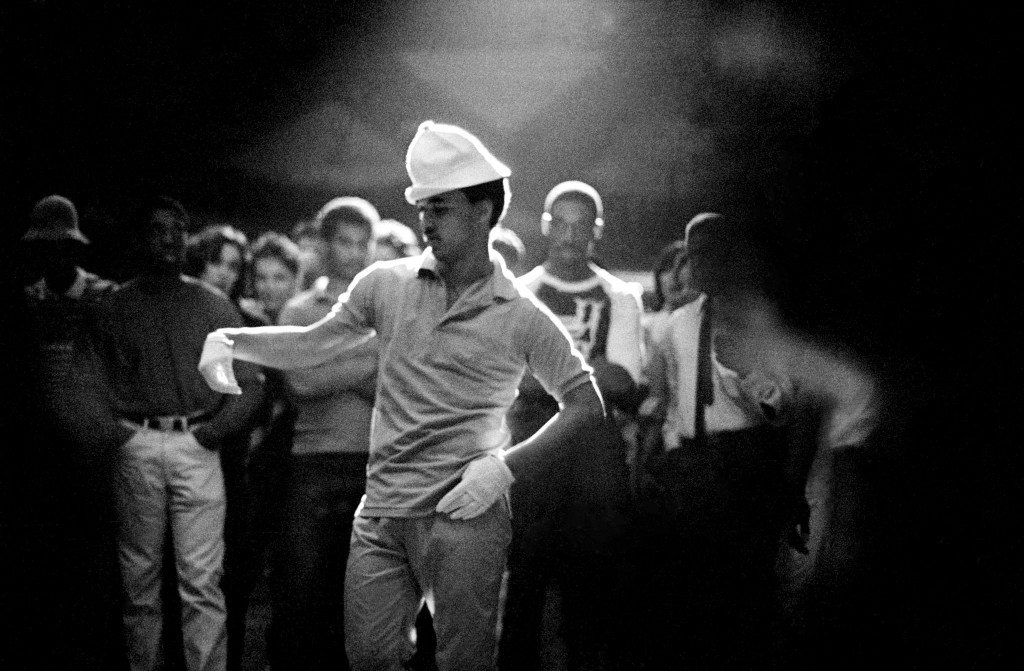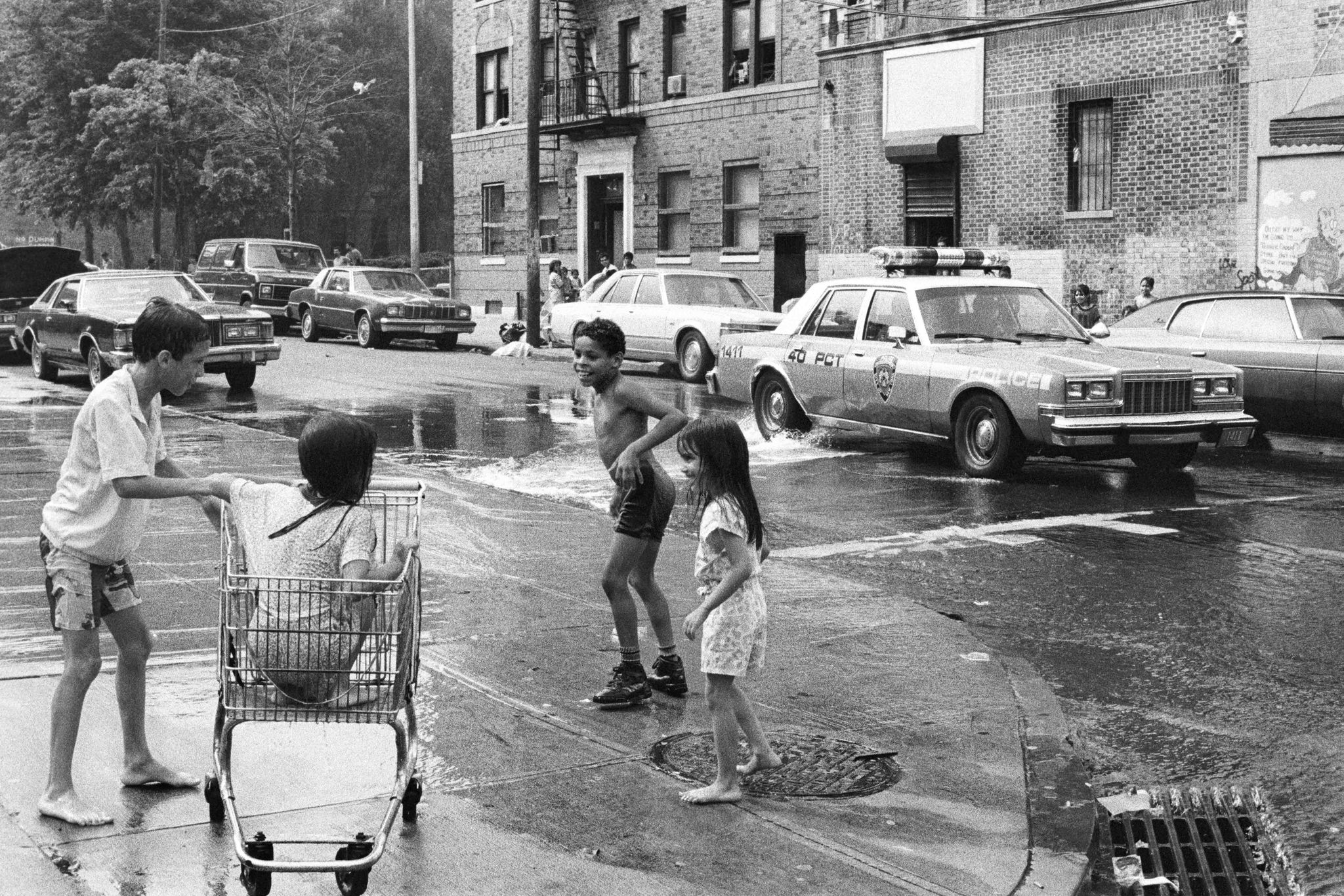Seis del Sur is a photography exhibit running through March 8th, 2013 at the Bronx Documentary Center.
The Bronx of the 1970s through the early 1990s comes back to life in this rare and emotional exhibit that showcases the work of six talented Puerto Rican photographers who were working side-by-side (often not even knowing so) at a time when New York City’s most tempestuous borough was facing its worst era of infrastructural and cultural devastation. Yet despite all of this destruction and urban disinvestment and decay, an enduring beauty of spirit and will—of hope—reigns supreme.
The focus is on the South Bronx where the photographers were living, but the collection also takes excursions to Orchard Beach and the fabled Roseland Ballroom in Manhattan. What’s captured is the cultural crossroads where the newly born hip-hop culture begins to flourish alongside the traditional island music brought by Puerto Rican emigrants and other immigrants—island guitars and Japanese boom-boxes wrestle for dominance.
Some highlights for us were David González’s “The Dancers” (1979), a stunning shot of a gorgeous couple dancing on an emptied street, while everyday life continues around them—tough and tender. Ricky Flores’ “800 Fox St” (1983) captures a terrifying blaze on an apartment building’s topmost floors, while the Bodega Hispana on the street level seems to endure the crisis above it with silent resilience. The building seems to be on the verge of exploding and is shedding debris.


Joe Conzo Jr. “The Popper, Roseland Ballroom” – 1980
Joe Conzo Jr.’s “The Popper, Roseland Ballroom” (1980) reveals early hip-hop unraveling in Manhattan, where the cultural import from the Bronx is poised to spark a global dance, music and fashion revolution—innocent roots at play. Ángel Franco’s “With Her Sad Face and Plastic Tiara…” (1991) presents a lonely girl exiled to a desolate landscape that even features a car that has been “flattened like a beer can” somehow. Innocent and alienating.
Francisco Reyes’ “Not in Our Block…” (1980) features community organizers challenging local female actors on their decisions to play prostitutes in the movie “Fort Apache: The Bronx”. And Edwin Pagán’s “Summertime, South Bronx” (1987) illustrates the joy of children at play despite their circumstances—a fire-pump and metal shopping cart seem to transport their imaginations to another world.
Never lacking hope or political protest, this exhibit illustrates how the Puerto Rican people of the Bronx—as well as African-Americans and others—endured this nation’s worst ongoing urban disaster known to date (even the 911 attacks happened in just one day). It also underscores how being Puerto Rican is a political existence, whether one lives on the island or on the mainland—echoes of revolt and revolution ring as clear as bells throughout.
Although its improved greatly, the South Bronx’s 16th Congressional District is still the nation’s poorest, yet its proximity to upper Manhattan makes it a vulnerable destination for the widespread gentrification of long-standing Latino communities, such as is seen in South Side Williamsburg, Brooklyn—New York City’s oldest Puerto Rican neighborhood. We just hope that the progress can happen from within, so that the South Bronx’s native citizens can remain there if they wish to.
If anything, this assemblage of extraordinary photography shouts one thing in particular in our minds—never give up, no matter what.
For more info on the Bronx Documentary Center go to this link: http://bronxdoc.org




[…] Seis del Sur: Resurrecting the Bronx’s Fiery Past. […]